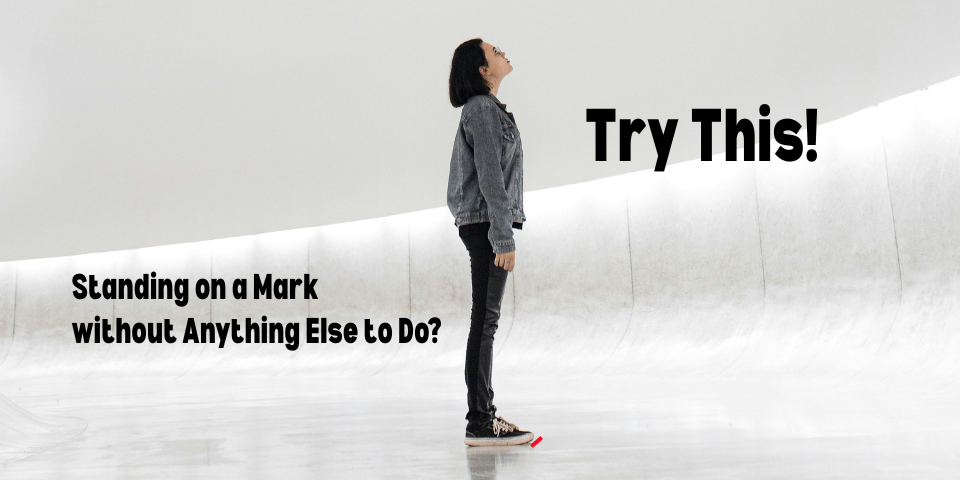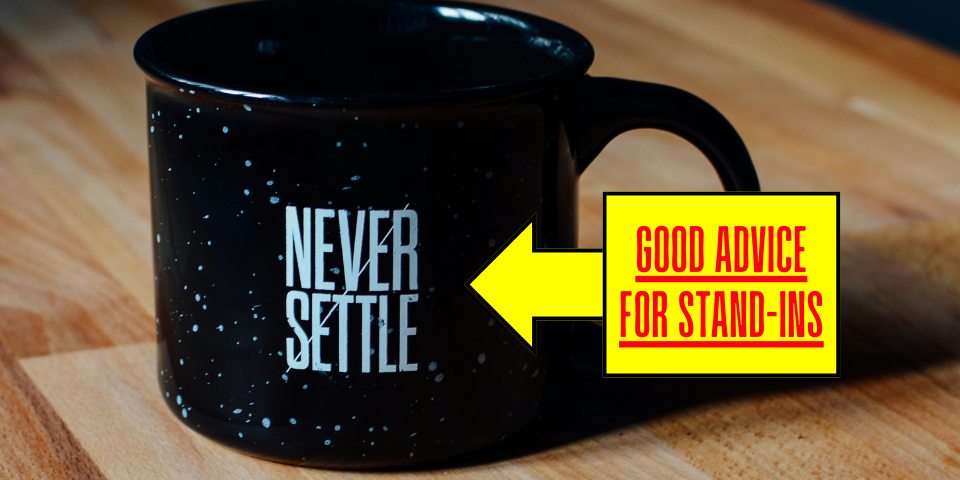When it comes to standing in on a new television or film job — whether the production is new or you’re just new to the production — production may be trying to sniff out whether you’re a competent stand-in.
Truth be told, not all production people will think highly of new stand-ins or know that you have years of set experience. They may even wrongly presume that you don’t do your job unless you are told what to do.
If you’re working on a set like this and you’re new to it, the challenge then becomes to do things that tell a convincing story that you aren’t below expectations as a stand-in, but rather that you exceed expectations.
Here are a few ways you can gain that “professional edge” and help production know that you’re a solid, experienced, and competent stand-in who exceeds their expectations.
Basically, Know What to Do
If you’ve read The Stand-In Handbook and read a lot of the material on Stand-In Central, you are well on your way to demonstrating competence as a stand-in. If you’ve read the materials, you are at a professional advantage over other stand-ins who are unfamiliar with the rhythms of the job and what your responsibilities are when you are on set.
Now, you don’t need to say that you’ve read the handbook or that you’ve read Stand-In Central! When you use the information you learn, it will be fairly obvious that you have some sense of what the job of the stand-in is truly like.
Knowing what to do is half the battle toward demonstrating your competence as a stand-in. The other half involves doing your job before you’re asked, as well as showing crew relationships.
Do Your Job Before You’re Asked
Typically, when production calls out “Checking the gate!,” most of the time stand-ins will be needed on set very soon after to set up a new shot. What will happen on many sets is when it’s called out “The gate is good!,” the 1st AD will call out what’s happening next, as well as put out a call for “Second team!” (Stand-ins are what’s known as “second team.”)
If you’re new to a production and you’re standing in, you usually will do yourself a favor if you are on set or standing by very close to it when production calls out “Second team!” When they find you already on set or very close to it, the story that’s told is that you know what to do.
You also help build your reputation as dependable because rather than having the production search for you in some unknown place around set, when they need you you’ll be right by set. That sort of dependability can go a long way with the ADs, who are embarrassed by stand-ins who are nowhere to be found when they are needed.
Also, when you are on or very near set before production has to call for second team, you tell the story that not only do you know what to do, but you “get it.” You are less likely to need instruction on how to stand in or behave on a set. Production doesn’t need to spend time and energy educating you on how to do your job.
Other ways you can do your job before you’re asked is to go toward the monitors after you’ve been excused from set. Many productions will want stand-ins to know what’s going on with their actors during takes. The stand-in who watches the monitors during takes will stand out as more knowledgeable, engaged, and responsible next to the stand-in who doesn’t watch the monitors, doesn’t know what’s going on, and always needs to be told what the actor did during takes. When you know what your actor did without production having to tell you, you gain a professional advantage and demonstrate your competence as a stand-in.
Showing Crew Relationships
Chances are, if you’ve stood in on a production for any long period of time, you will get to know crew members, their names, and their personalities. As you continue to see them on different productions, you will develop a common history together and care about them even more as people than as co-workers.
When you show up on a new stand-in job and when you see crew members with whom you’ve worked, it may help elevate your profile as a stand-in to make sure to say hello, shake hands or hug, or otherwise engage with these crew members in a meaningful way. Of course, this is just common sense and will be the natural thing to do.
But aside from being a natural thing to do, the story it tells is that you’re “somebody,” not just an anonymous stand-in, and it further gives you a professional edge as a stand-in because it helps to demonstrate your reputation and your experience. It tells the story that you are “part of the crew” rather than an “outsider.”
Conclusion
The above advice will help you get through the first few days working as a new stand-in on a production, and it may help you to keep a job while other stand-ins may lose theirs.
Naturally, the above does not guarantee you’ll be asked back, but it does help toward convincing a production that you’re not an inexperienced, day-playing stand-in. It helps to say that you’re a stand-in who can handle a lot of the demands of working on a television or film project over the long haul.
Do you have other ways for demonstrating your competence as a stand-in, giving you a “professional edge”? We’d love to hear them. Share in the comments section!






Leave A Comment